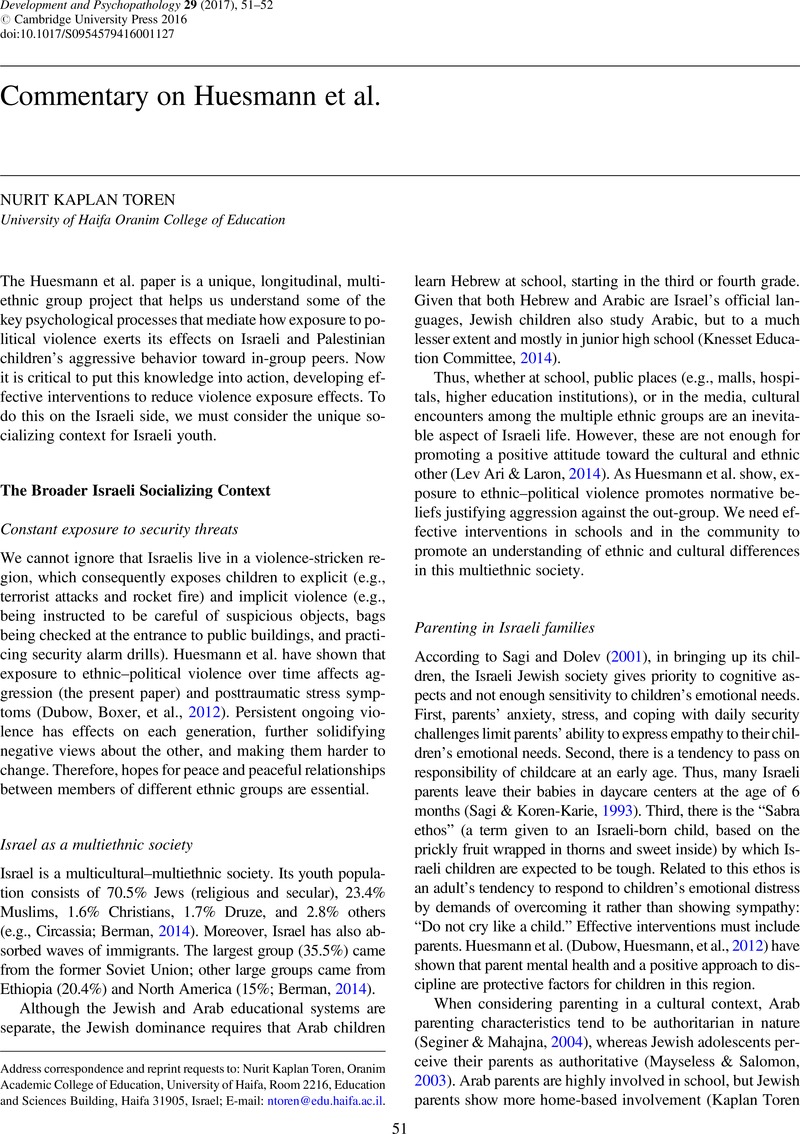Kaplan Toren, N., &
Kumar, R. (
2014).
Arabs’
and Jews’
students’
similarity and differences perceptions of parents’
educational involvement and its effect on students functioning in school. Paper presented at “Not in My Backyard” conference on cultural inclusion and diversity in educational and social systems, Israel.
Google Scholar 
Target article
Children's exposure to violent political conflict stimulates aggression at peers by increasing emotional distress, aggressive script rehearsal, and normative beliefs favoring aggression
Related commentaries (1)
Commentary on Huesmann et al.